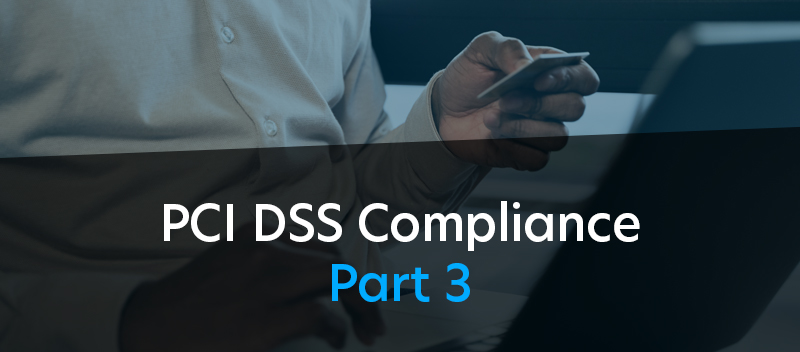Blog The Role of Penetration Testing in Incident Response
The Role of Penetration Testing in Incident Response

Cybersecurity threats are a daunting reality for many organizations. Did you know penetration testing is one effective way to uncover security vulnerabilities before attackers exploit them? This blog post will guide you through the pivotal role of penetration testing in enhancing your incident response measures.
What is Penetration Testing?
Penetration testing, often called pen testing in the cybersecurity industry, is a critical process that simulates attacks on a system to identify any weaknesses or vulnerabilities.
These simulated cyberattacks mimic the actions of malicious actors who aim to gain unauthorized access and extract sensitive information from your systems. This proactive approach enables you to discover potential entry points for attackers before they can exploit them.
The intent behind penetration testing is to identify technical security gaps and understand business risks associated with these vulnerabilities. It helps strengthen security posture by uncovering hidden flaws within your systems, which may lead to substantial financial losses, damage your reputation, or result in legal liabilities if exploited by real attackers.
Penetration tests are typically performed in compliance with regulatory requirements and industry standards such as PCI-DSS, HIPAA, and GLBA, among others.
Types of Penetration Testing
There are various types of penetration testing, including internal, external, targeted, blind, and double-blind.
Internal Penetration Testing
Internal penetration testing plays a critical role in enhancing an organization’s cybersecurity. It focuses on identifying weaknesses within the incident response protocols, providing valuable data for improving overall readiness against cyber threats.
This process involves simulating attacks that could occur from inside an organization to assess potential entry points malicious actors might exploit.
Apart from bolstering incident response skills, internal penetration testing also assists organizations in meeting regulatory requirements and industry standards such as PCI-DSS, HIPAA, and GLBA.
Explicit permission is required from the organization undergoing evaluation to achieve accurate results and maximum effectiveness of this test. In some cases where specialized skills are lacking within the organization for conducting these tests efficiently, outsourcing becomes a viable option to ensure a thorough assessment of vulnerabilities and security controls.
External Penetration Testing
External penetration testing examines an organization’s cybersecurity from the perspective of a malicious actor on the outside. This type of testing mimics cyber threats to reveal potential entry points for unauthorized access and extract sensitive information, such as customer data or intellectual property.
Without causing any actual harm, it uncovers vulnerabilities within web applications, operating systems, or network controls that could lead to significant financial losses or damage to reputation if exploited by real attackers.
External penetration testing forms an integral part of comprehensive security strategies. It is required by regulatory standards like PCI-DSS and HIPAA to safeguard critical assets in today’s rapidly evolving cybercrime landscape.
Organizations can use this proactive measure to enhance their incident response skills while maintaining compliance with industry protocols.
Targeted Penetration Testing
Targeted penetration testing is a focused approach to identifying vulnerabilities in specific areas of an organization’s system. It involves simulating attacks on targeted entry points, such as critical applications or sensitive data repositories, to uncover weaknesses that malicious actors could exploit.
By conducting targeted penetration testing, organizations can gain valuable insights into the effectiveness of their security controls and incident response processes. It helps them take proactive measures to strengthen their defenses and reduce the risk of unauthorized access, potential data breaches, financial losses, and damage to their reputation.
Blind Penetration Testing
Blind penetration testing is an adversarial testing used in the cybersecurity industry. Its purpose is to simulate real-world attacks on a system without prior knowledge or access.
Organizations grant explicit permission for this testing, allowing cybersecurity professionals to identify weaknesses and potential entry points that malicious actors could exploit.
By conducting blind penetration testing, organizations can assess the effectiveness of their existing security controls in detecting and preventing such attacks, ultimately protecting critical assets like customer data, intellectual property, and financial information.
Double-Blind Penetration Testing
Double-blind penetration testing is a type of testing that involves the tester having no prior knowledge of the target system’s security measures. This approach aims to simulate a real-world attack scenario where the attacker has no insider knowledge of the system.
By conducting double-blind penetration testing, organizations can uncover vulnerabilities and gaps in their incident response plans that may not be apparent through other testing methods.
Skilled and experienced testers are required for this type of testing, as they simulate real-world attack scenarios without prior knowledge of the target system’s security measures.
The Process of Penetration Testing
The penetration testing process involves planning and reconnaissance, scanning, gaining access, maintaining access, and analyzing results to improve security readiness.
Planning and Reconnaissance
Planning and reconnaissance are crucial stages in the process of penetration testing. During this phase, cybersecurity professionals gather information about the target system or network and strategize their approach.
They research to understand the organization’s infrastructure, potential vulnerabilities, and entry points that malicious actors may exploit. By thoroughly planning and conducting reconnaissance, these experts can gain valuable insights into the organization’s security posture, identify weaknesses before attackers do, and develop a targeted testing strategy.
This proactive approach helps organizations enhance their incident response protocols by addressing any vulnerabilities discovered during the penetration testing process.
Scanning
Scanning is vital in penetration testing as it allows for network surveillance and discovering vulnerabilities. Security experts use specialized tools to analyze the targeted system or network during scanning.
By conducting scan tests, they can identify potential entry points that malicious actors could exploit to gain unauthorized access and extract sensitive information. Scanning helps organizations proactively detect weaknesses before cyberattacks occur, reducing the risk of financial losses, damage to reputation, and legal liabilities.
It enables them to stay compliant with regulatory requirements and industry standards such as PCI-DSS, HIPAA, and GLBA while improving their overall security posture.
Gaining Access
Penetration testing involves gaining access to a system or network replicating what a malicious actor might do. That allows organizations to assess their security controls’ effectiveness and identify potential vulnerabilities.
By attempting to gain unauthorized access and extract sensitive information, penetration testers can pinpoint weaknesses in an organization’s defenses and help prevent potential cyberattacks.
This process helps companies strengthen their security posture by addressing gaps or flaws in their incident response processes before real threats can exploit them.
Maintaining Access
Penetration testing helps organizations maintain access to their systems by identifying potential entry points that attackers could exploit. By simulating attacks, penetration testing can uncover vulnerabilities that may allow unauthorized individuals to gain and maintain access to an organization’s sensitive information.
This process requires explicit permission from the organization being tested, ensuring access is maintained legally and ethically. Regular penetration testing also helps organizations comply with regulatory requirements and industry standards, further providing the maintenance of access to their systems.
Overall, penetration testing provides organizations with a comprehensive understanding of their security posture, allowing them to take necessary steps to maintain access and mitigate risks.
Analysis and WAF Configuration
Analysis and Web Application Firewall (WAF) Configuration are crucial steps in the process of penetration testing. Analysis involves carefully evaluating and interpreting the results obtained from the various stages of penetration testing, such as planning, scanning, gaining access, and maintaining access.
This analysis helps organizations understand their security posture and identify any weaknesses or vulnerabilities in their incident response protocols. On the other hand, WAF Configuration focuses on setting up and managing a web application firewall to protect against potential threats.
By configuring the WAF effectively, organizations can safeguard their web applications from unauthorized access and detect potential vulnerabilities. These two aspects are vital in enhancing an organization’s readiness for security incidents and improving overall cybersecurity measures.
The Importance of Penetration Testing in Incident Response
Penetration testing plays a crucial role in incident response by identifying vulnerabilities, addressing weaknesses in protocols, and enhancing overall readiness for security incidents.
Identifying Vulnerabilities
Penetration testing plays a crucial role in incident response by helping organizations identify vulnerabilities within their systems. Through simulated attacks, penetration testing uncovers weaknesses that may not be apparent through traditional security measures such as firewalls and antivirus software.
By identifying these vulnerabilities before malicious actors can exploit them, organizations can take proactive steps to address the weaknesses and reduce the risk of successful attacks. That helps strengthen the organization’s overall security posture and minimize potential damage in the event of a breach.
Vulnerabilities can exist in an organization’s infrastructure’s logical and physical aspects, including computers, software, infrastructure devices, physical security measures, sensitive information, and even employee vulnerabilities.
Addressing Weaknesses in Incident Response Protocols
Penetration testing plays a crucial role in addressing weaknesses in incident response protocols. By simulating attacks, organizations can identify vulnerabilities before malicious actors exploit them.
This proactive approach identifies potential entry points and unauthorized access attempts, enabling organizations to strengthen their security controls and protect critical assets such as customer data, intellectual property, and financial information.
Through penetration testing, companies can uncover hidden vulnerabilities that may have been overlooked, enhancing their incident response processes and improving overall readiness for security incidents.
Enhancing Readiness for Security Incidents
Penetration testing plays a crucial role in enhancing readiness for security incidents. Organizations can identify vulnerabilities and weaknesses in their systems, networks, and applications by simulating real-world cyberattacks.
This proactive approach allows them to address these issues before malicious actors exploit them. Moreover, penetration testing helps organizations comply with regulatory requirements and industry standards by ensuring effective security controls.
By regularly conducting penetration tests, organizations can build a robust risk assessment strategy and improve their security posture. Taking these proactive measures is essential in today’s cyber threat landscape to protect critical assets such as customer data, intellectual property, and financial information.
Conclusion
Penetration testing is crucial in incident response by helping organizations identify protocol weaknesses and enhancing overall readiness. By simulating attacks, it uncovers vulnerabilities and provides recommendations for improvement.
Regular penetration testing is essential to stay proactive and protect critical assets from ever-evolving cyber threats.




